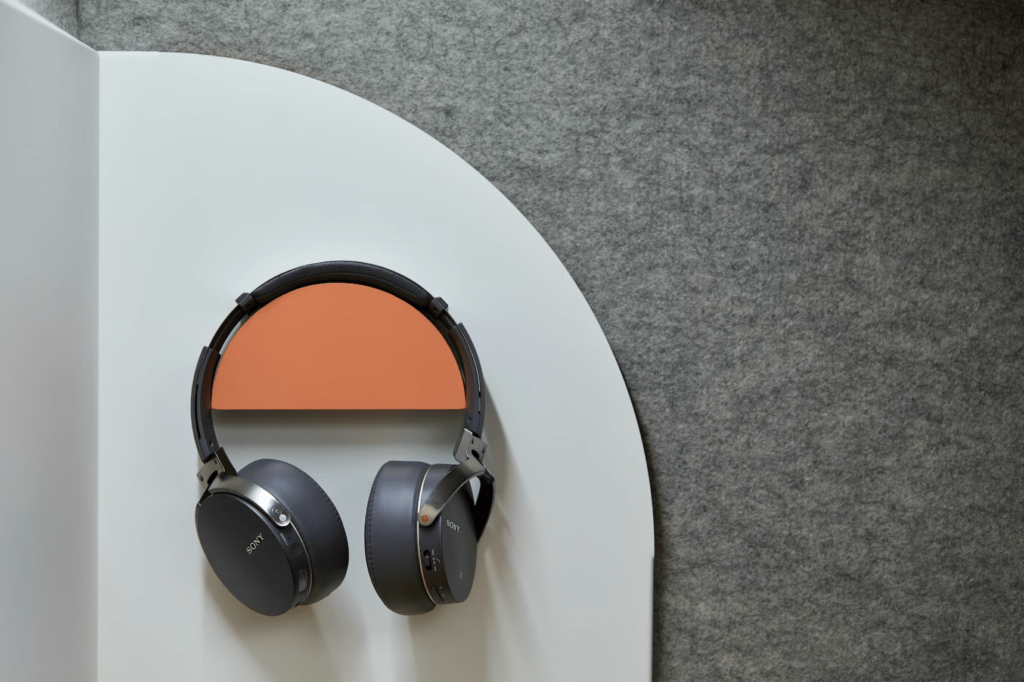7 Different Types of Earplugs and What They Are Used For
In this post, you’ll get an overview of various types of earplugs, their primary uses, and important considerations to remember while using them.
Earplugs are commonly used for:
- Hearing protection at work and the range
- Maintaining sound fidelity at concerts and entertainment venues
- Improving sleep by reducing nighttime noise
- Reducing daytime noise during travel, studying, or meditating
- Relieving stress
- Keeping water out of ears during aquatic activities
- Alleviating ear pain during air travel
Please note that the following insights and experiences I have shared are subjective and may not apply to all situations.
1. Earplugs types: Foam Earplugs

Foam earplugs are the most efficient noise-reduction earplugs available. They are compressed into a tight cylinder and inserted into the ear canal, gradually expanding to conform to the unique shape of the ear canal.
Foam earplugs can be highly effective at blocking noise, especially low-frequency noise when inserted deeply. This post outlines how to insert and test their fit. I’ve personally used foam earplugs to block hums as low as 40-50 Hz. Note that noise reduction data in the US is typically published down to 125 Hz, while in Europe it’s down to 63 Hz. Foam earplugs come in various sizes and shapes, with tapered and cylindrical plugs being the most common.
With so many options available, most people can find a comfortable and well-fitting pair. Foam earplugs have a noise reduction rating (NRR) of up to 33, the highest available for any earplug, with a typical range of 28-33.
Where are foam earplugs used?
- Loud work environments
- Shooting ranges for hearing protection
- Improving sleep, and concentration during studying, travel, and meditation
- Blocking out snoring noise
- Entertainment venues like concerts and loud bars.
Advantages:
- Highly effective at reducing noise
- No rigid parts
- Conform to the unique shape of your ear canal, providing comfort
- Available in a wide range of sizes and shapes to fit different ears
Disadvantages:
- One size does not fit all, so you may need to experiment with different earplugs to find the perfect fit.
- Correct insertion is crucial to achieving maximum protection. Poor insertion can result in little or no protection.
- Some individuals may find any pressure in their ear canal uncomfortable.
- Not suitable for use while swimming.
- In some situations, foam earplugs can be too effective and hinder communication.
2. Reusable earplugs (pre-molded)

Silicone earplugs that can be used multiple times typically come with a stem, which is relatively rigid, making it easier to insert into the ear canal. Attached to the stem are either three or four soft flanges. Alternatively, some earplugs have a single rubbery cone or dome.
To insert the earplug, gently pull your ear (pinna) up and outwards, then insert the earplug into your ear canal. Once inserted, release your ear. You may twist or wiggle the plug slightly, but avoid using too much force.
Ensure that all the flanges are correctly positioned within the ear canal.
Most types of reusable silicone earplugs are watertight if they fit properly. They offer a significant level of noise reduction, with ratings typically ranging from 20 to 28, and some even higher. Only foam earplugs provide better noise reduction.
However, as reusable earplugs are pre-molded, they may not fit the ear canal as well as foam earplugs, making it challenging to achieve a good seal, especially if the ear canal has an unusual shape. Although they can be worn for up to eight hours a day, they tend to be less comfortable than foam earplugs.
In my personal experience, I find reusable earplugs less comfortable, and they can cause irritation to the ear canal. Therefore, I recommend using them for shorter periods. Additionally, it’s crucial to remove them slowly to prevent air from rushing in too quickly and causing sudden air pressure changes that could violently move the eardrum.
Here’s a bullet-pointed version of the text:
Where is pre-molded used?
- Hearing protection in a loud work environment
- Swimming (some models are even specifically designed for swimming)
- Studying, travel, meditation, and sleep (some types have a soft stem)
- At entertainment venues (concerts, loud bars)
Advantages:
- Washable and reusable
- Can provide a watertight seal
- Only the stem (but not the plug) needs to be touched when inserting reusable earplugs
- No roll-down necessary
Disadvantages:
- They don’t work for some ear canals.
- Reusable earplugs are not as comfortable as foam, wax, or silicone putty earplugs.
- Most types are not as effective as foam earplugs.
3. Wax earplugs

It was 1907 when wax earplugs were invented and became commercially available. The earplugs are typically made from paraffin wax. The wax is rolled into a ball after being warmed in your hand. After flattening the ball, you will need to pull your ear up a bit while applying it.
It’s important to note that these earplugs are designed to only seal the canal entrance and should never be inserted into the ear canal as they may not be removable.
Some companies use pure wax, while others use a wax-vaseline-cotton mix. Both types work well against noise, although in my experience, pure wax earplugs are slightly more prone to losing their seal than wax-cotton-mix plugs, but they also leave fewer residues.
Because these earplugs are moldable and only seal the ear canal entrance, they are very comfortable. However, they may not reduce as much noise (especially low-frequency noise) as foam or reusable silicone earplugs, resulting in a lower noise reduction rating.
Where are wax earplugs used?
- For sleep, studying, travel, and meditation
- Against everyday noises when moderate noise reduction is required
- For people who can’t tolerate any pressure in their ear canal
Advantages:
- Easy to apply
- Very comfortable
- No pressure in the ear canal
Disadvantages:
- Wax earplugs don’t reduce as much noise as foam and reusable silicone earplugs, especially lower-frequency noise.
- They are only moderately effective against snoring and machine noise.
- Body-generated sounds such as chewing and speech can get amplified and sound boomy. (occlusion effect)
- Wax earplugs cannot be cleaned.
- They can leave a residue on your hand and your ear canal entrance
4. Silicon putty earplugs
![]()
Moldable silicone putty earplugs are similar to wax earplugs in terms of noise reduction and usage. They can be used for everyday noise reduction during sleep, studying, travel, and meditation. However, they also have the added advantage of being effective at keeping water out during swimming. To use them, you knead the putty into a ball and flatten it over the ear canal opening.
Silicone putty earplugs should also not be shaped into cones or inserted into the ear canal to prevent the plugs from breaking. In comparison to wax earplugs, silicone putty earplugs leave fewer residues.
Where are silicone putty earplugs used?
- To keep water out when swimming, bathing, or showering
- For sleep, studying, travel, and meditation
- Against everyday noises when moderate noise reduction is required
- For people who can’t tolerate any pressure in their ear canal
Advantages:
- Easy to apply
- Very comfortable
- No pressure in the ear canal
Disadvantages:
- Silicone putty earplugs don’t reduce as much noise as foam and some reusable silicone earplugs, especially lower frequency noise.
- They are only moderately effective against snoring and machine noise.
- Body-generated sounds (chewing, speech, etc.) can get amplified and sound boomy, known as the occlusion effect.
- They cannot be cleaned.
7. Earplugs types: custom-molded

The shape, length, and diameter of ear canals differ significantly among individuals. It is highly likely that your left ear canal is different from your right ear canal.
To account for this, some people choose to wear different earplugs in each ear. In my case, I can insert a foam earplug more deeply into my left ear than my right ear.
If you have an unusual ear canal shape, standard reusable silicone earplugs may not fit you well and may even be uncomfortable.
Audiologists take impressions of each ear canal to make custom earplugs. After taking these impressions, custom-molded earplugs are created to fit precisely into your ears.
Getting accurate impressions of your ear canals is crucial for the quality of your custom earplugs.
The effectiveness of noise reduction can vary depending on the type and intended use of the earplugs.
Your audiologist may conduct a personal attenuation rating test to determine the effectiveness of your custom earplugs in reducing noise.
What are Custom-molded earplugs used for?
Custom molded earplugs can serve a variety of purposes and can be tailored to meet your specific needs. Some of the most common uses include:
- Reducing everyday noise and aiding sleep
- Protecting hearing in loud work environments
- Swimming
- Shooting and hunting
- Musicians using acoustic filter earplugs (as shown in the image above)
- Motorcycle riders
Advantages:
- Custom-fit for reliable and comfortable use
- Highly effective in reducing noise (although not necessarily more effective than well-fitted foam earplugs)
- Cleanable and reusable for extended use
- Available for various purposes
Disadvantages:
- Requires lead time for production
- Can be expensive
Summary
Among their uses are hearing protection, maintaining sound quality, improving sleep, reducing noisy environments, alleviating ear pain, and preventing water from getting into ears during water activities. While foam earplugs reduce noise well and conform to the unique shape of your ear canal, they may be uncomfortable for some and require correct insertion for maximum protection. These earplugs don’t fit as well and are less comfortable than foam earplugs, but they are washable and can provide a watertight seal. Wax earplugs seal the canal entrance and can be moldable, but shouldn’t be used inside the ear.


